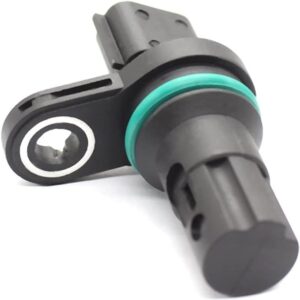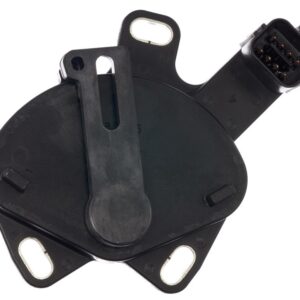**Decoding the Mass Air Flow Sensor: A Key Component in Engine Performance**
In the realm of automotive engineering, where precision and efficiency reign supreme, the mass air flow sensor (MAF sensor) emerges as a silent yet indispensable hero. While often overlooked by many drivers, this small but mighty device plays a critical role in ensuring optimal engine performance, fuel efficiency, and emissions control. Let’s embark on a journey to uncover the secrets and significance of the mass air flow sensor.
**Understanding the Essence: What is a Mass Air Flow Sensor?**
Nestled within the intake air duct of modern vehicles, the mass air flow sensor is a vital component responsible for measuring the mass of air entering the engine. This information is relayed to the engine control unit (ECU), allowing it to adjust fuel delivery and optimize combustion for maximum efficiency and performance.
**The Significance of Air Measurement**
In the intricate dance of combustion within an engine, achieving the perfect air-fuel ratio is essential for optimal performance and minimal emissions. The mass air flow sensor serves as the eyes and ears of the engine, providing real-time data on the volume and density of incoming air. This data allows the ECU to precisely meter the amount of fuel injected into the combustion chamber, ensuring efficient combustion under all operating conditions.
**The Silent Observer: How Does a Mass Air Flow Sensor Work?**
Despite its unassuming appearance, the mass air flow sensor employs sophisticated technology to fulfill its role. Most modern vehicles are equipped with a hot wire or hot film mass air flow sensor, which measures airflow by detecting changes in the temperature of a heated element exposed to the incoming air stream.
As air flows over the heated element, it cools the element, causing a change in its electrical resistance. This change in resistance is proportional to the mass of air passing through the sensor and is converted into a voltage signal, which is then sent to the ECU for processing. Based on this signal, the ECU adjusts the fuel delivery to maintain the optimal air-fuel ratio for efficient combustion.
**The Unseen Benefits: Advantages of Mass Air Flow Sensors**
Beyond their primary role in metering airflow, mass air flow sensors offer several benefits that contribute to the overall performance and efficiency of modern engines:
1. **Improved Fuel Efficiency:** By accurately measuring airflow and adjusting fuel delivery accordingly, mass air flow sensors help optimize combustion efficiency, leading to improved fuel economy and reduced emissions.
2. **Enhanced Engine Performance:** Maintaining the correct air-fuel ratio ensures that the engine operates at peak performance, delivering smoother acceleration, improved throttle response, and overall drivability.
3. **Emission Control:** Mass air flow sensors play a crucial role in reducing harmful emissions by ensuring that the engine operates within its emissions compliance limits. This helps vehicles meet stringent emissions regulations and contributes to cleaner air quality.
4. **Diagnostic Capabilities:** Mass air flow sensors also aid in onboard diagnostics by detecting anomalies in airflow, such as restrictions or leaks in the intake system, which can indicate underlying engine problems or issues with other engine components.
**Looking Ahead: The Evolution of Mass Air Flow Sensing Technology**
As automotive technology continues to advance, the role of mass air flow sensors remains integral to achieving greater efficiency, performance, and environmental sustainability. Future innovations may include the development of more advanced sensor technologies, such as laser-based airflow measurement or integrated sensor systems, to enhance accuracy, reliability, and responsiveness.
Furthermore, as vehicle electrification becomes more widespread, mass air flow sensors will continue to play a crucial role in optimizing the efficiency of internal combustion engines in hybrid and plug-in hybrid vehicles, as well as in ensuring the proper operation of emissions control systems in combustion engine-powered vehicles.
**In Conclusion: The Unsung Hero**
In the intricate tapestry of automotive engineering, where every component plays a vital role, the mass air flow sensor stands out as a silent guardian of efficiency and performance. Its unassuming presence belies its critical importance in ensuring that modern engines operate at their peak, while minimizing their environmental footprint.
So, the next time you start your car and feel it purr with power, take a moment to appreciate the unsung hero working quietly beneath the surface—the humble mass air flow sensor.
In stock (can be backordered)
$37,904.62
**Decoding the Mass Air Flow Sensor: A Key Component in Engine Performance**
In the realm of automotive engineering, where precision and efficiency reign supreme, the mass air flow sensor (MAF sensor) emerges as a silent yet indispensable hero. While often overlooked by many drivers, this small but mighty device plays a critical role in ensuring optimal engine performance, fuel efficiency, and emissions control. Let’s embark on a journey to uncover the secrets and significance of the mass air flow sensor.
**Understanding the Essence: What is a Mass Air Flow Sensor?**
Nestled within the intake air duct of modern vehicles, the mass air flow sensor is a vital component responsible for measuring the mass of air entering the engine. This information is relayed to the engine control unit (ECU), allowing it to adjust fuel delivery and optimize combustion for maximum efficiency and performance.
**The Significance of Air Measurement**
In the intricate dance of combustion within an engine, achieving the perfect air-fuel ratio is essential for optimal performance and minimal emissions. The mass air flow sensor serves as the eyes and ears of the engine, providing real-time data on the volume and density of incoming air. This data allows the ECU to precisely meter the amount of fuel injected into the combustion chamber, ensuring efficient combustion under all operating conditions.
**The Silent Observer: How Does a Mass Air Flow Sensor Work?**
Despite its unassuming appearance, the mass air flow sensor employs sophisticated technology to fulfill its role. Most modern vehicles are equipped with a hot wire or hot film mass air flow sensor, which measures airflow by detecting changes in the temperature of a heated element exposed to the incoming air stream.
As air flows over the heated element, it cools the element, causing a change in its electrical resistance. This change in resistance is proportional to the mass of air passing through the sensor and is converted into a voltage signal, which is then sent to the ECU for processing. Based on this signal, the ECU adjusts the fuel delivery to maintain the optimal air-fuel ratio for efficient combustion.
**The Unseen Benefits: Advantages of Mass Air Flow Sensors**
Beyond their primary role in metering airflow, mass air flow sensors offer several benefits that contribute to the overall performance and efficiency of modern engines:
1. **Improved Fuel Efficiency:** By accurately measuring airflow and adjusting fuel delivery accordingly, mass air flow sensors help optimize combustion efficiency, leading to improved fuel economy and reduced emissions.
2. **Enhanced Engine Performance:** Maintaining the correct air-fuel ratio ensures that the engine operates at peak performance, delivering smoother acceleration, improved throttle response, and overall drivability.
3. **Emission Control:** Mass air flow sensors play a crucial role in reducing harmful emissions by ensuring that the engine operates within its emissions compliance limits. This helps vehicles meet stringent emissions regulations and contributes to cleaner air quality.
4. **Diagnostic Capabilities:** Mass air flow sensors also aid in onboard diagnostics by detecting anomalies in airflow, such as restrictions or leaks in the intake system, which can indicate underlying engine problems or issues with other engine components.
**Looking Ahead: The Evolution of Mass Air Flow Sensing Technology**
As automotive technology continues to advance, the role of mass air flow sensors remains integral to achieving greater efficiency, performance, and environmental sustainability. Future innovations may include the development of more advanced sensor technologies, such as laser-based airflow measurement or integrated sensor systems, to enhance accuracy, reliability, and responsiveness.
Furthermore, as vehicle electrification becomes more widespread, mass air flow sensors will continue to play a crucial role in optimizing the efficiency of internal combustion engines in hybrid and plug-in hybrid vehicles, as well as in ensuring the proper operation of emissions control systems in combustion engine-powered vehicles.
**In Conclusion: The Unsung Hero**
In the intricate tapestry of automotive engineering, where every component plays a vital role, the mass air flow sensor stands out as a silent guardian of efficiency and performance. Its unassuming presence belies its critical importance in ensuring that modern engines operate at their peak, while minimizing their environmental footprint.
So, the next time you start your car and feel it purr with power, take a moment to appreciate the unsung hero working quietly beneath the surface—the humble mass air flow sensor.
| Warehouse | Inventory at warehouse 2 |
|---|



Get E-mail updates about our latest products and special offers.
Sensors and More is Jamaica’s ultimate online auto parts store. Established in 2020, we specialize in genuine electrical parts for Japanese, Read more…
Reviews
There are no reviews yet.